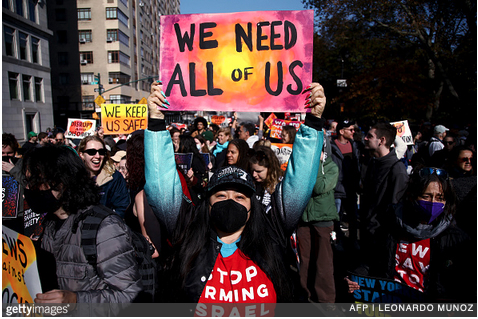More than 2,000 children have been separated from their families at the border. Here’s the latest on what’s happening at the border, in Washington and among Texas politicians.
BY MARILYN HAIGH
/https://static.texastribune.org/media/files/3b3b34fc24316acdb191ec15e7750d71/Brownville_International_Bridge_RL_TT.jpg)

Send us your questions about Texas politics and policy by emailing texplainer@texastribune.orgor visiting texastribune.org/texplainer.
The attention of the nation has turned to Texas and its border with Mexico after the Trump administration enacted a policy that has resulted in undocumented children being separated from their parents. Here’s what we know:
What’s happening at the border?
In April, the federal government announced an immigration policy of “zero tolerance,” saying all adults who cross the border illegally between official ports of entry would be criminally prosecuted. Since children can’t be sent to jail, kids who were detained with their parents were being separated from them. While their parents went through the legal system, children were handed over to the U.S. Department of Health and Human Services’ Office of Refugee Resettlement.
In the last two months, at least 2,500 children were separated, The Washington Post has reported. The Trump administration tested the “zero tolerance” policy starting in October. The New York Times reported that, between October and April, more than 700 children were separated from adults claiming to be their parents. The reporting was based on data from the Office of Refugee Resettlement.
As stories of children being separated from their parents have spread, outrage swelled across the political spectrum. On Wednesday, President Donald Trump signed an executive order saying the separations should stop. He directed that, “to the extent permitted by law,” immigrant families should be held together in immigration detention facilities run by the Department of Homeland Security.
Soon after, the U.S. Border Patrol said it stopped referring migrants with children to courthouses for prosecution, effectively exempting families from the zero tolerance policy, according to the Washington Post. One possible reason: Under a legal settlement, children cannot be detained for more than 20 days, even if they are with their parents. But federal officials say it’s just a pause. The “zero tolerance” policy remains in play, they say.
For now, the Trump order has brought an end to the practice of separating families and prosecuting migrant adults with children. But the president’s executive order asks Homeland Security to look for new ways to house immigrant families together and bypass the 2o-day detention limit.
What will happen to the kids already separated from their parents?
On June 26, a federal judge ordered immigration officials to reunite families within 30 days, according to the Washington Post. Children under 5 must be reunited with parents within 14 days and parents must be able to call their children within 10 days.
ICE has released some plans that same day to reunite families so they “can be returned to their home countries together.” However, the government hasn’t outlined a plan to reunify parents and children who are seeking asylum and will stay in the country while their claims are processed.
Some detained migrants were told they would be reunited with their children if they signed voluntary removal orders from the United States. A Honduran man who spoke to the Texas Tribune on June 23 said he said a voluntary deportation agreement out of “desperation” to see his 6-year-old daughter.
Southwest Key Programs, the Texas-based nonprofit that houses almost half of the undocumented children in federal custody, said it is keeping track of the location of parents. Children are allowed to be in contact with their parents, according to Alexia Rodriguez, the vice president of immigrant children’s services for Southwest Key.


